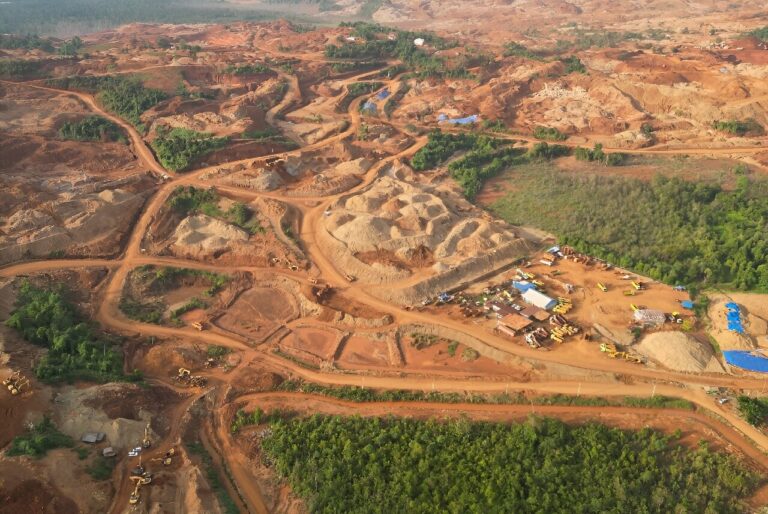Indonesia’s nickel reserves are the largest in the world.
More than 700,000 hectares of forest in Indonesia have been cleared for mining since 2001, including vast swathes of primary forest, according to a new analysis using satellite data.
TreeMap, a conservation startup, used high-resolution imagery from multiple satellites and two decades of data from the long-running Landsat program to map mines and related infrastructure and track deforestation.
Mining – including pits, processing facilities, tailings areas and roads – is estimated to have cleared 721,000 hectares (7,210 square kilometres) of forest between 2001 and 2023.
About 150,000 hectares of that area was primary forest, areas with high carbon stocks and large trees with intact old growth, according to the analysis released this week.
The group’s Atlas Nusantara shows the striking disappearance of forest cover in time-lapse sequences as mines and associated infrastructure are developed.
The mines were identified through a combination of “visual interpretation and machine learning,” says David Gaveau, founder of The TreeMap.
“Open-pit mines are easily identified… by their concentric lines of benches dug into the pit walls for coal mines, or by their tendency to be located along river banks, for gold mines,” he explained.
All types of mines also have distinctive “spectral signatures” – a measure of energy – that are characteristic of areas of bare ground and are easily detected, he added.
The group cross-referenced its findings with official maps of mining concessions, local media reports and NGO reports.
Using historical satellite imagery also allowed them to detect mines that are now abandoned and overgrown.
The impact of coal mining was by far the largest, accounting for about half of all tracked deforestation, followed by gold, tin and nickel.
While data showed a spike in deforestation in 2013, the problem has started to worsen again in recent years.
By 2023, mining was linked to an annual loss of nearly 10,000 hectares of primary forest, Gaveau said.
Indonesia’s environment ministry did not respond to a request for comment on the analysis.
The latest public government figures, which are not broken down by cause, show that more than 73,000 hectares of forest area were lost in 2021-22, with more than 104,000 hectares of total deforestation that year, including “non-forest areas”.
Deforestation linked to mining still falls far short of the loss of forests caused by oil palm and timber plantations.
But it is an area of growing concern as Indonesia increasingly relies on coal and seeks to expand exploitation of its nickel reserves.
Indonesia has the world’s largest reserves of nickel, a key component of batteries used in electric vehicles.
A 2022 study found that 80% of global forest loss linked to mining was occurring in just four countries: Indonesia, Brazil, Ghana and Suriname.
Indonesia is by far the most affected country, accounting for nearly 60% of global forest loss linked to mining tracked in the study.
© 2024 AFP
Quote: Satellite images show deforestation toll from Indonesian mines (2024, July 5) retrieved July 5, 2024 from https://phys.org/news/2024-07-satellite-images-deforestation-toll-indonesia.html
This document is subject to copyright. Apart from any fair dealing for the purpose of private study or research, no part may be reproduced without written permission. The content is provided for informational purposes only.


